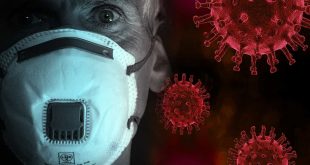B.C.’s COVID-19 death rate of approximately 33 deaths per million people is one of the lowest among jurisdictions in Canada, the U.S. and western Europe with populations of five million or more. Officials and health experts credit its success to a combination of sound decision-making and good fortune.

The day that 60-year-old Cathy Novak got the call from public health authorities on Vancouver Island saying she tested positive for COVID-19, restaurants across British Columbia were already closing after a ban on gatherings of more than 50 people was implemented.
That was March 16.
Five days later, 10 deaths in the province were linked to the novel coronavirus, and Novak, a part-time dental hygienist who attended an international industry conference in Vancouver in early March that drew thousands of people, was struggling to breathe as she lay in an ambulance on her way to a hospital in Victoria.
“At that point, I was feeling a bit hopeless,” Novak said as she struggled to hold back tears in an interview with CBC News in her backyard in Victoria.
“I don’t know if I am coming back home.”
Within a few hours of arriving at the hospital her husband, John McAllister, learned she was placed on a ventilator.
“That was when the doctor told me that if we waited any longer, even one more day, it might have been too late,” he said.
WATCH | Vancouver Island resident describes her experience:
Cathy Novak speaks about her experience being taken by ambulance to hospital with severe symptoms. 0:59
Shutting down spring break
In mid-March, with cases of COVID-19 rising rapidly and with outbreaks in multiple long-term care homes, it appeared that B.C. was poised to be hit particularly hard by the global pandemic.
However, in the months since, the province has been praised for flattening the curve ahead of other regions.
B.C. recorded Canada’s first COVID-19 death on March 8 — at the Lynn Valley Care Centre in North Vancouver.
The current COVID death rate in the province is approximately 33 deaths per million people — one of the lowest among large jurisdictions in Canada, the U.S. and western Europe.
Officials and health experts credit its success to a combination of sound decision-making and good fortune.
“Part of it was timing, part of it was luck, and part of it was embracing what we needed to do and doing it together,” said Dr. Bonnie Henry, B.C.’s provincial health officer, in an interview with CBC News.
The timing of B.C.’s March break, which began on March 16, was fortuitous.
Unlike in Quebec, where spring break came at the start of the month, when school let out in B.C., health officials were already advising Canadians to cancel all non-essential trips out of the country.
It was a different message in Ontario however, which had March break at the same time as Premier Doug Ford on March 12 told a press conference: “I just want the families and their children to have a good time. Go away, have a good time, enjoy yourselves, and we’re going to be monitoring the situation.”
The government announced the same day that schools would be closed for two weeks following the break.
Beyond the timing of holiday travel, public-health experts say the close co-ordination between the province’s health authorities, as well as its management of long-term care homes, were factors in reducing transmission.
Care-home changes
“Initially, there was some fear experienced by the staff, by some residents and families,” said Dr. Michael Schwandt, a medical health officer with Vancouver Coastal Health.
In the beginning, health-care workers were on the lookout for the typical cough and fever, but Schwandt said that by mid-March, the health region’s testing strategy for care facilities was much broader and included testing people who were dizzy, confused and had unexplained falls.
On March 27, the province issued an order to limit the movement of staff between care homes and announced that wages would be standardized so workers who typically do shifts at multiple facilities wouldn’t face financial hardship. The province estimates that move is costing about $10 million a month.
“That would have had a very significant damping effect on preventing this wildfire from hopping from one long-term care home to another,” said Colin Furness, an infection control epidemiologist at the University of Toronto.
While B.C.’s order came about three weeks ahead of Ontario’s decision to restrict staff movement, it still took months to implement as care-homes had to sort out staffing schedules and wage structures
Gradually over the past two and a half months, B.C’s 501 care facilities have moved to single site staffing, with the process completed June 18.
B.C. was also among the provinces that weren’t dependent on the federal procurement program for personal protective equipment but was able to source and import gloves, masks, gowns and respirators through its own supply-chain management system.

Health officer in front of response
Throughout the public-health emergency, Dr. Bonnie Henry has been out front, updating the public on provincial transmission, as well as closures, restrictions and other safety precautions.
Furness said that has helped instill confidence and credibility.
“If I could put us in a time machine, and I could send Ontario back to early March, I would have an effective expert owning the podium and doing the communication,” he said, referring to the fact that Ontario’s premier has handled the majority of the briefings in his province.
While B.C. has been praised for its handling of the pandemic, and marked its first week with no COVID-19 deaths since March this Friday, Henry said she doesn’t feel that she can slow down and take a breath.
There have been more than 45 outbreaks at care facilities in the province, including during the week of June 15.
WATCH | There’s more work to be done, says Dr. Bonnie Henry:
B.C.’s Provincial Health Officer Bonnie Henry says despite its relative success, B.C. is not in the clear with COVID-19. 1:03
“We can never get it perfectly right,” Henry said.
“It is really hard to look back right now, because we still have a lot of ways to go until we are out of this crisis.”
B.C. has one of the lowest testing rates in Canada and has chosen to recommend testing only for people with symptoms. That is a much different strategy than next door in Alberta, which has a slightly higher death rate than B.C.’s but where testing is available to anyone.
Henry said a priority for the fall, when health experts say Canada will likely see a second wave of COVID-19, is to enhance contact tracing by making the system for monitoring people who test positive more rapid and efficient.
Complacency concern
For Novak, it has now been more than two months since she was discharged from the hospital, and she is still gradually recovering. She was on the ventilator for 12 days and didn’t realize how long she had been in a coma until a nurse told her a few days after she regained consciousness.
“I couldn’t sleep that night. I did a lot of reflecting and feeling lucky to be alive,” she said.
But when Novak was discharged in mid-April, her body was weakened. She was unable to even open a can of pop, and she found herself irritable and frustrated in those first few weeks.
She said she’s grateful for the care she received but is surprised at how little contact she has had from public health workers to check in on her progress.
“That has probably been the difficult part because we don’t have a GP, and I feel like I don’t really have the followup I thought I would have,” she said.
Novak and her husband are sticking close to home and say they will likely be the last people out mingling, because they aren’t sure whether he ever contracted the virus.
“We are definitely worried about people getting complacent,” she said.
“Hopefully, I will never get it again, but there are other people you could pass it on to, so that’s still a danger.”

 The Argus Report Read about it!
The Argus Report Read about it!




